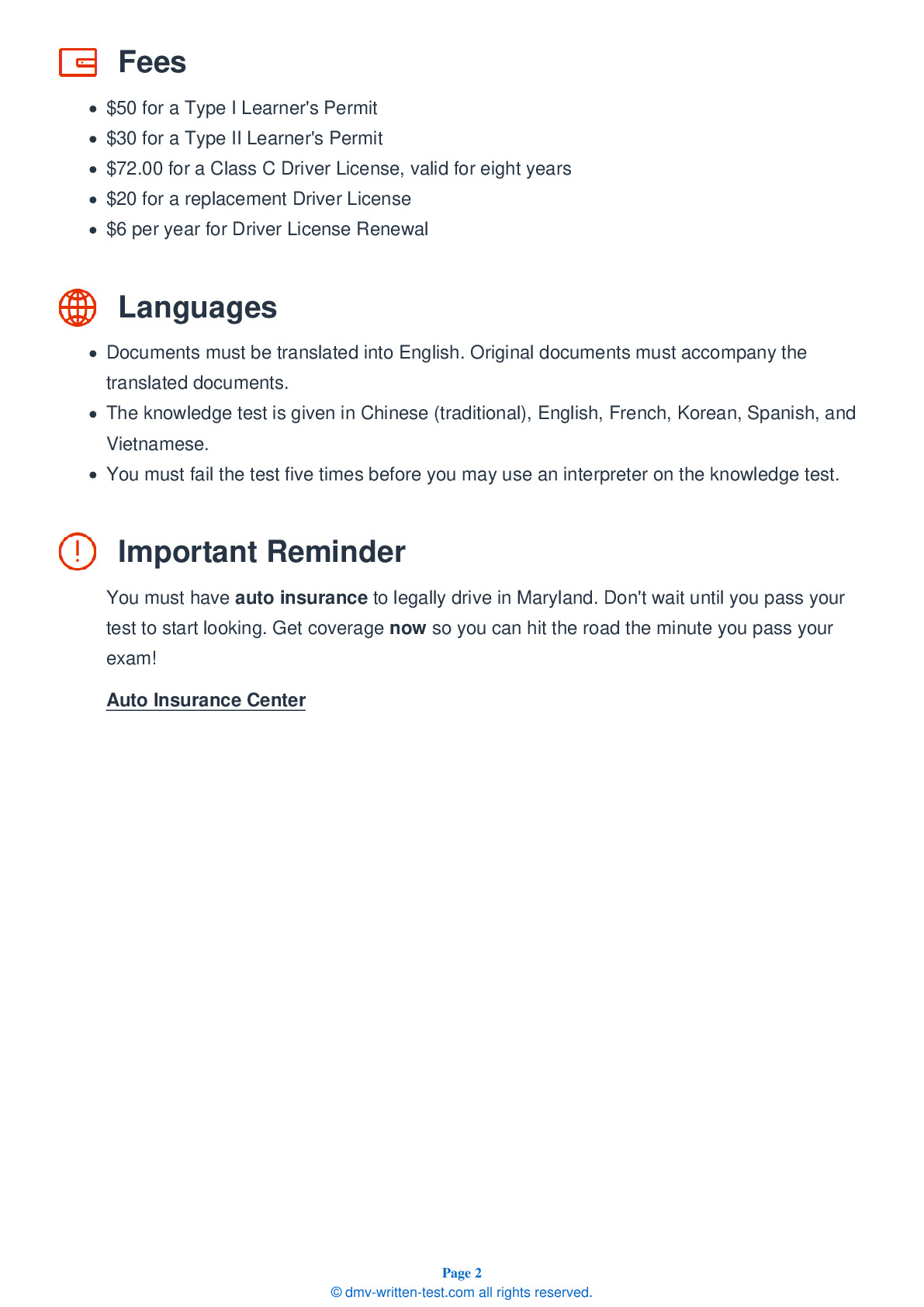2026 Maryland Permit Test 11
The following questions are from real DMV written tests. These are some of the actual permit questions you will face in Maryland. Each permit practice test question has three answer choices. Select one answer for each question and select "grade this section." You can find this button at the bottom of the drivers license quiz. For a complete list of questions and answers for Maryland please visit https://cheat-sheets.dmv-written-test.com/en/maryland/car.
Number of Tests
Number of Question
Passing Score
2. Which of the following statements about blind spots is true?
Explanation
Even if a vehicle is properly equipped with rearview and outside mirrors, it still has blind spots that cannot be seen in the mirrors. Large trucks have much larger blind spots than most passenger vehicles.
3. You are driving on a city street and see an emergency vehicle with flashing lights behind you. What should you do?
Explanation
You must yield the right-of-way to any emergency vehicle that is using its siren and lights. Drive to the right edge of the road and stop until the emergency vehicle has passed. If you are within an intersection, drive through the intersection first and then stop.
4. To help avoid skidding on slippery surfaces, you should:
Explanation
Slow down before you enter a curve because you do not know what may be ahead. Braking on a curve may cause you to skid.
5. A broken yellow line beside a solid yellow line indicates that:
Explanation
A broken yellow line alongside a solid yellow line means that traffic in the lane next to the broken line may cross the line to pass, while traffic in the lane next to the solid line may not.
6. A blood alcohol concentration of 0.02 percent:
Explanation
Every 0.02 percent increase in blood alcohol concentration nearly doubles a driver's risk of being in a fatal crash.
7. When driving under snowy or icy conditions:
Explanation
When driving under snowy or icy conditions, you should make speed and directional changes gradually. Never use cruise control when driving on snow or ice because your tires may lose contact with the road and you will lose control of your vehicle.
8. This sign is used to warn drivers about:

Explanation




